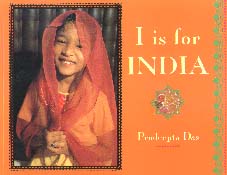Dec 26, 2004 is one of the worst days in history of mankind. The earthquake triggered a series of devastating tsunamis that spread throughout the Indian Ocean, killing large numbers of people and inundating coastal communities across South and Southeast Asia, including parts of Indonesia, Sri Lanka, India, and Thailand. This is considered one of the worst natural disasters in known history.
Fishermen live near the sea and for them, on this day, it appears that their dear friend had suddenly turned extremely violent. The book My Friend, the Sea is a story of a fisher-boy who escapes the tsunami and it follows the feelings of this child as he tries to understand how his best friend, the sea, could turn so violent.
The book is presented from the point of view of this boy. It starts in an optimistic note as the boy talks about his friend - the Kadalamma, the Ocean Mother. The culture and life of the fisherfolk is tightly integrated with ocean and the initial pages explains their boat - Kattumaran (their boat that has not changed its design for almost 3000 years) , their food - kanji, that his father and grandfather prefer to eat in the middle of the sea and his life with family and friends.
Grandfather is the boy's hero as he claims in the beginning of the book - "his grandfather knows everything" (like every kid of his age would think of their grandfathers and grandmothers). So, he surprised and completely taken aback that even his grandfather was not able to hear the tsunami coming that day. He loses his father and many of his friends on the fateful day, but remains hopeful that they could probably still find their way back.
The book ends in an optimistic note too - he says that his school is going to reopen again and talks about his plans to go wave riding with his friends again. Inspite of the great devastation and personal lose, the boy does not lose hope and looks forward for his own kattumaram that his brother has promised him.
On a personal note(not related to the book), I realised how much of an effect the tsunami's tragedy had on Sooraj based on the following episode. Many months after the devastation, when we visited the beach, the moment he saw the waves from far, his first question was -- 'Amma, Appa, Is that tsunami?'. He had somehow intrinsically associated the waves with tsunami. Being born and brought in a city, books like these would probably help city children and parents understand nature and how it is intrinsic to the life of many non-city children (something that we as city dwellers have forgotten long back).
The book is written by Sandhya Rao and the photographs are by Karuna Sesh and Pervez Bhagat. The book is published by Tulika Books in association with Consulate General of Germany, Chennai. As the book excerpts claim - it tries to avoid the pictures of the devastation and tries to concentrate on optimism and longing of the fisherfolks for their dearest friend - the Sea. The publishers mention that the book is for 6+ years old, but, I feel it is a good book that we, as parents, could share with our 4 year olds too. This book is a followup of another book by Tulika Publishers called Suresh and the Sea.






